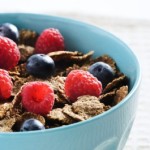
Food Combos Protect vs. Blood Sugar Spikes
When most people think about food, they mentally divide items into two basic groups: “healthy” and “unhealthy.” The problem with this approach is that it’s far too simple, and often times, it gets us into trouble when it comes to eating in a manner which protects our bodies from blood sugar surges.
Over time, these repetitive sugar spikes can lead to insulin resistance, prediabetes, and eventually, to type 2 diabetes. Our bodies were created with a blood sugar regulatory system managed by a small organ, the pancreas.Situated right behind your stomach, a healthy pancreas is able to lower blood sugar by producing and releasing a hormone called insulin into your bloodstream. Conversely, it can raise your blood sugar (if you haven’t eaten in a while or are undergoing heavy exertion) by way of the hormone glucagon.
The name of the game when it comes to maintaining a healthy pancreas and blood sugar metabolism is to feed your body the right way. It’s here where our “healthy” vs. “unhealthy” view of foods can get us into trouble. Surprisingly, some healthy foods can send our blood sugar levels soaring if we fail to properly pair and partner them with other foods.
Therefore, we need to get back to the basics of thinking about food along the lines of the three food groups: proteins, carbohydrates, and fats. All digested food will end up as glucose (or sugar) molecules by which we fuel our bodies. Carbohydrates (even healthy whole grains) produce the sharpest spikes in our blood sugar. Proteins are slower to digest, and fats even slower, which—to our benefit—results in a delayed sugar release and yields a “softer” rise in overall blood sugar.
Here’s how to take this knowledge and make it practical:
- Don’t eat fruit that’s low in fiber (i.e., bananas, berries) by themselves. Always pair it with either a healthy fat or a protein (a small portion of nuts, nut butter, cheese, or cream). Apples, pears, oranges, etc., which have a higher fiber content are “blood sugar safe” as the fiber slows its breakdown into glucose.
- Don’t eat a carbohydrate (even a whole grain one) without partnering it with a healthy fat or protein. Use a thin smear of butter, spray of olive oil, thin slice of cheese or turkey/chicken to guard against blood sugar spikes.
- Lean proteins (including whole eggs) and healthy fats (avocados, nuts) can always be eaten solo, as they have little effect on your blood sugar.
Remember, prediabetes and type 2 diabetes are the byproduct of relentless blood sugar spikes which result from poor food choices, failure to pair “healthy foods” wisely, or simply from eating too much of a good thing.